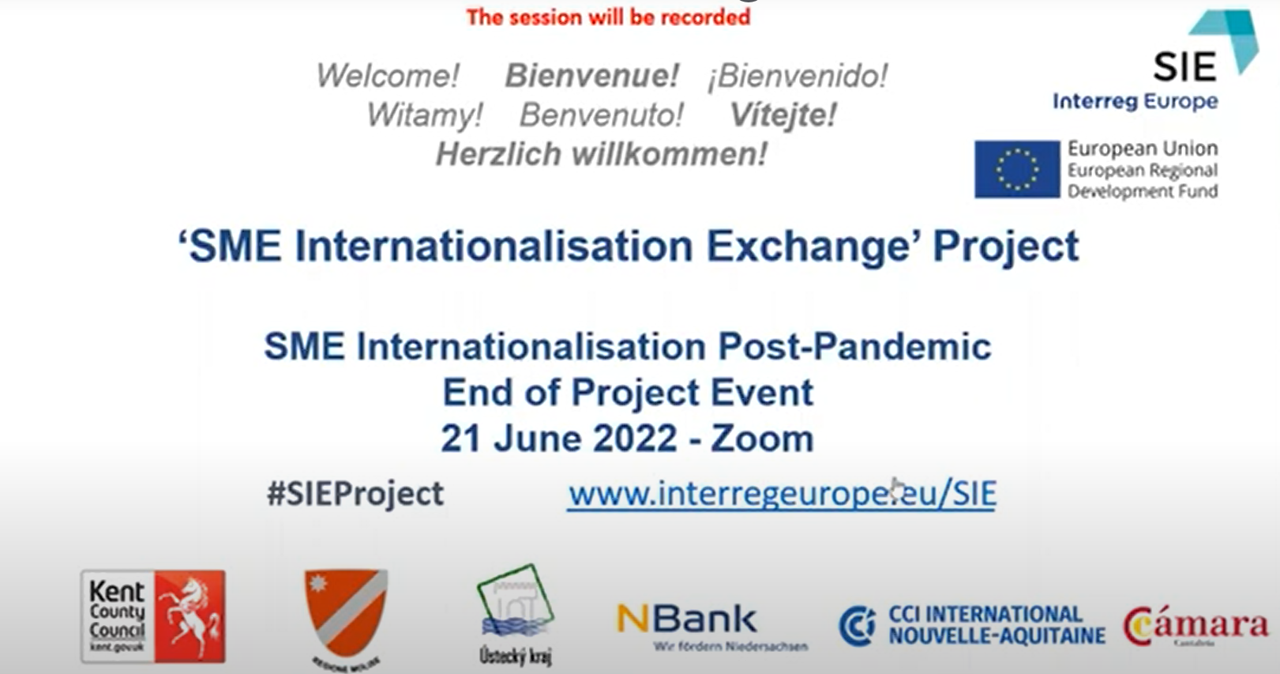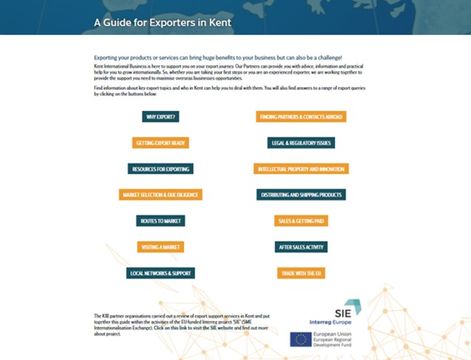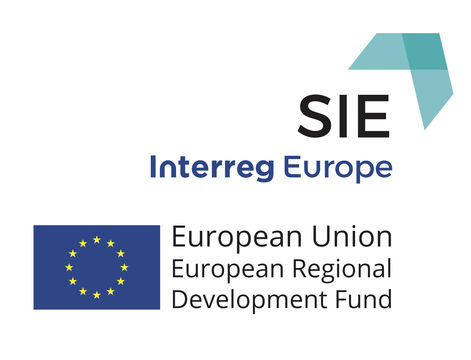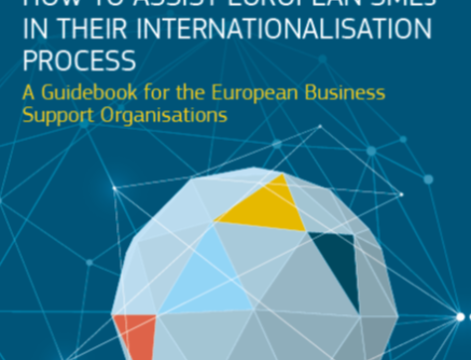
Final SIE Event
The SIE partners organised a webinar to share challenges and solutions to help with SME internationalisation post-pandemic.
The 7 SIE partner regions are keen to respond to the challenge of increasing SME internationalisation capacity and this project will help them to assess the effectiveness of current policies and the support initiatives that they cover.
Each partner will showcase successful support interventions in its region so that the other regions can test new ways of helping companies.
SIE will include study visits, local stakeholder groups, joint research into barriers faced by SMEs and regional action plans to improve policy design and implementation.
The partners will explore how different SME support mechanisms (workshops, trade missions/fairs, investment funds, B2B matchmaking and online tools) work in each region. The project activities will focus on a variety of topics including digital vs physical exports and international vs European trade.
€1,140,361.00
SME competitiveness
Internationalisation is a key way for SMEs to innovate & grow and is an essential part of ensuring that Europe continues to compete in the global market.
SMEs want to find new markets for their products & services but internationalisation can be complex. Companies face barriers when doing business in other countries but with the right support, internationalisation can help businesses to grow & become more innovative.
SIE will primarily influence the South East of England (SELEP) ESIF strategy which is related to the delivery of EU structural funds in Kent. The ESIF strategy links to the UK's national ERDF Operational Programme which is split into 39 local strategies.
The SELEP ESIF strategy includes a thematic objective on SME Competitiveness which focuses on “increasing trade & inward investment”. The policy recognises low levels of exporting in Kent and the barriers to international trade. It aims to overcome these by encouraging business support initiatives which help SMEs to access international markets.
SIE presents a significant opportunity to improve this policy through inter-regional working by learning and applying best practice from the 6 SIE partner regions.
The ERDF OP for Molise focuses on "competitiveness in the production system" (Priority axis 3) and its main thematic objective is "to promote the competitiveness of SMEs".
This objective will help "to develop and realise new patterns of activities for SMEs" and in particular relating to the internationalisation process.
Specific objective 3.3 of the ERDF programme's thematic objective is "to increase the level of internationalisation of the production system".
SIE will help to improve this policy by capitalising on best practice and methods used by the different project partner regions.
The national Czech OP includes investment priority 2.2; the "Development & implementation of new models for SMEs, especially in the area of international trade", this policy aims to:
The policy includes 3 measures:
The policy covers a very wide a range of initiatives; Ústí Region will learn from the SIE partner regions to highlight and focus on implementing methods which prove most effective in unlocking SME internationalisation capacity.
The 2014-20 Operational Programme in Lower-Saxony includes a focus under investment priority 1B, on boosting the competitiveness of SMEs. The programme has adopted a specific sub-action to support SME growth within regional, national and international markets and to help companies become more innovative.
Nbank is responsible for the implementation of the majority of aspects of the OP and SIE provides a good opportunity to make improve this policy instrument and assistance for SMEs through the inter-regional exchange process and by learning from the different approach of partners.
The main objective of the Region Kujawsko-Pomorskie ERDF programme is to boost competitiveness and innovation. In particular, the OP's Priority 1 focuses on "Strengthening Innovation & Economic Competitiveness". Thematic objective 3 "Enhancing the competitiveness of small and medium-sized enterprises" will be the main priority of the programme within which a number of SME internationalisation support measures will be launched. The policy has a specific target to “increase the level of foreign trade among regional SMEs”.
SIE links to thematic objective 3 of the ERDF OP for Aquitaine which aims to “Improve business competitiveness”. Investment priority 3d aims to "develop SME's capacity to grow in regional, national and international markets”.
The Aquitaine Regional Plan for Business Internationalisation also sets out several priorities for SME internationalisation in Aquitaine:
An “export pathway” with successive steps to ensure that all potential exporters get the prerequisites for a successful internationalisation including:
There is scope to improve various aspects of these policies through applying innovative solutions identified from partner regions.
The regional ERDF OP in Cantabria emphasises the importance of SME internationalisation for the development of the local economy. Priority 3b & d aim to "Improve the Competitiveness of SMEs". In particular the OP focuses on:
These strategic objectives are not only part of the regional ERDF programme but also the RIS3 strategy for Cantabria which seeks to address the following issues:
A key need in Cantabria is to facilitate access for SMEs to financial resources and cooperation platforms or spaces that improve regional business growth and competitiveness.
There are also strong links through the SIE project to the National Chamber Internationalisation Plan in Spain which focuses on how to help SMEs develop internationalisation capacity.

The SIE partners organised a webinar to share challenges and solutions to help with SME internationalisation post-pandemic.

The SIE project is organising a series of workshops to explore the impacts of the pandemic on SME internationalisation support in the SIE partner regions.

The SIE project came to an end in December 2020 and the partners have put together some videos to share the results.

The SIE project's 'Kent Export Manager Pilot Scheme' has helped Karimix to increase its international sales

The Lead Partner for the SIE project has been piloting a voucher scheme to provide some extra resource for SMEs in Kent to help with exporting

The Lead Partner for SIE has been working with local stakeholders to develop an Export Pathway approach to helping small businesses with internationalisation

Going international has many advantages for SMEs and their home region market insight can help them.

As part of the SIE project's Phase 2, Kent County Council has recently awarded €10K vouchers to 3 local businesses to enable them to work with an Export Manager

The SIE Final Dissemination Event will take place in Brussels on 5 November 2020

Enterprise Europe Network has produced a useful guide for Business Support Organisations on supporting SMEs with internationalisation.